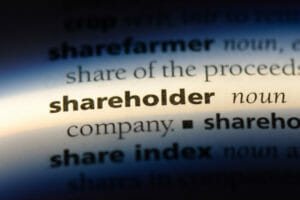
How to Calculate the New Capital Gains Tax on the Sale of Your Business
Over the past few weeks, we’ve been inundated with calls and emails from our clients inquiring about the impact of the newly proposed increase in capital gains inclusion rate set out in Canada’s Budget 2024 to their upcoming sale.
The proposed changes are highly relevant to our clients as any increase in inclusion rate will affect the taxation of both an asset and a share sale of a small business. There is no escaping the new tax unless you choose to do a freeze prior to the June 25th deadline. Even then, you are freezing only the prior value under the new rates and any future increase in gains will attract the higher inclusion rate. More than this, a freeze may not be feasible for an impending sale that is already in a moving car.
We have taken the liberty to prepare a few calculative scenarios to exemplify the current tax payable on a business sale versus the new rates for illustrative purposes. We hope this will be helpful to our clients in understanding the new proposed changes and in calculating their approximate taxes on an upcoming sale.
Share Sale
Share Sale – Existing Rates
The existing capital gains inclusion rate is 50% which means 50% of any capital gain is included in the taxpayers income to be taxed at the taxpayers marginal rate. Let’s to the following example:
Scenario:
Tom owns a concrete company and has entered into a Share Purchase Agreement for the sale of all of its shares prior to June 25, 2024. The sale price is $4,000,000. Tom is the only shareholder of the corporation. The concrete company is a Qualified Small Business Corporation (QSBC) which makes Tom eligible for the Lifetime Capital Gains Exemption. We assume Tom’s adjusted cost base is $1.00. We assume Tom resides in the Province of Ontario.
Calculations:
The current LCGE exemption limit is $1,016,836. Tom will utilize the full exemption limit on this sale. This means that he will not pay tax on the first $1,016,836 whatsoever.
- $4,000,000 – less the LCGE of $1,016,836 = $2,983,164
Therefore, the taxable amount is $2,983,164
Next, we take the capital gain of $2,983,164 and we multiply it by the inclusion rate of 50%
- Taxable capital gain of $2,983,164 x 50% inclusion rate = $1,491,582
Therefore, $1,491,852 will flow to Tom tax free (being the fifty per cent that was not taxed). As a result, you will notice that Tom has so far received $2,508,418 in capital gains completely tax free. This is comprised of the LCGE of $1,016,836 plus the fifty per cent that was not taxed of $1,491,582 totaling $2,508,418.
Back to our calculations, the remaining fifty per cent being $1,491,852 is taxable and is included in Tom’s income for the 2024 tax year. In order to determine Tom’s tax rate, we need to take a look at Canada’s marginal income tax rate. A marginal rate means the rate of tax increases the more income you earn. As the amount in question is $1,491,852, we know that this will attract the highest marginal rate of 53.53%, as the amount of the income exceeds the top marginal threshold of $246,000.
However, it would be a misnomer to multiply the $1,491,852 by 53.53% since the top marginal rate is not a flat tax, but merely the top marginal. There is a different rate of tax for each margin beneath it. The average blended tax rate of all margins in this scenario is 48.06% (we used a tax calculator to calculate the blended marginal rate, such as this one).
- Therefore our fifty per cent gain that must be taxed is $1,491,852 x 48.06% blended marginal rate = $716,984.07 in tax
On a $4,000,000 share sale prior to June 25, 2024 when the new rates come into play, Tom will pay a total tax of $716,984.07 which is about 18% of his sale proceeds.
Share Sale – New Rates
Scenario:
Using the same scenario as above, note that there are a few changes under the new proposal that affect Tom’s tax calculations. Let’s assume that this transaction is set to close in August of 2024 and will attract the new 66% inclusion rate. All other assumptions remain the same. Note however that Budget 2024 proposes to increase the Lifetime Capital Gains Exemption to $1,250,000 for dispositions taking place after June 25, 2024.
Calculations:
- $4,000,000 share sale proceeds – $1,250,000 new Lifetime Capital Gains Exemption limit = $2,275,000
Therefore, tax must be calculated on taxable portion of $2,750,000
Under the new rules, since this is a share sale, the first 250,000 of the capital gain attracts the old inclusion ate as follows:
- $250,000 x 50% inclusion = $125,000 included in income
We then take the portion included in income which is $125,000 and we multiply by our average blended tax rate of 48.06%:
- $125,000 x 48.06% tax rate = $60,075
For now, we have only calculated the tax applicable on the first $250,000 which attracts the prior inclusion rate. Now we must calculate the tax on the remaining amount which is $2,500,000.
The remaining amount of $2,500,000 ($2,750,000 less the $250,000 threshold as above) will attract the higher inclusion rate of 66%
- $2,500,000 x 66% revised capital gains inclusion rate = $1,650,000
This means that $1,650,000 will be included in Tom’s income to be multiplied against his applicable tax rate. The remaining 1/3 portion of approximately $825,000 will flow to Tom completely tax free.
Therefore, it should be noted that under this scenario, Tom has so far received $2,075,000 in capital gain completely tax free (being $1,250,000 in the revised Lifetime Capital Gains Exemption Limit plus $825,000 being the untaxed 1/3 portion of the taxable gain).
Now we take the amount that was to be included in Tom’s income which was $1,650,000 and multiply by his tax rate of 48.06%
- $1,650,000 taxable capital gain (being the 66% that was included in his income) x Tom’s tax average blended tax rate of 48.06% = $792,990
Now getting to our total, we must add the initial tax of $60,075 on the first $250,000 as above, plus the $792,990 that is owing on the remaining portion, for a total tax payable of $853,065. The effective overall tax rate is thus 21% (up from 18% of the overall gain in the prior scenario).
Summary of Share Sale Comparative Analysis
Share sale of $4,000,000 under old rate = $716,984.07 in tax payable
Share sale of $4,000,000 under new capital gains inclusion rate and other measures = $853,065 in tax payable
Difference: $136,080
Share Sale – Add in Canadian Entrepreneurs Incentive
If we take into account the new Canadian Entrepreneurs Incentive assuming that Tom’s corporation will qualify and assuming the transaction closing date is moved to 2025 when this measure is set to be implemented, then he will receive an additional $200,000 of income multiplied at the prior rate of 50% as opposed to 66%. When applying CEI to our scenario, we have the following tax calculations.
Calculations:
$4,000,000 share sale – $1,250,000 new Lifetime Capital Gains Exemption = $2,750,000
Therefore, tax must be calculated on the taxable portion of $2,750,000
The first 450,000 of the capital gain attracts the old tax rate as follows ($250,000 applies to all Canadians as we saw above, and now Tom is receiving an additional $200,000 of income attributable to the prior rate under the new CEI measure for a total amount of $450,000 which attracts the prior inclusion rate).
- $450,000 being the amount that attracts the prior 50% inclusion rate x 50% inclusion rate = $225,000 included in income
Now we must take the $225,000 that was included in income and multiply it by Tom’s applicable tax rate:
- $225,000 x 48.06% tax rate = $108,135
The remaining amount of $2,300,000 ($2,750,000 less the $450,000 which attracted the prior inclusion reate) will attract the higher inclusion rate of 66%
- $2,300,000 x 66% inclusion rate = $1,518,000
This means that $1,518,000 will be included in Tom’s income to be multiplied against his tax rate. The remaining 1/3 portion of approximately $759,000 will flow to Tom completely tax free. Therefore, in this scenario of the CEI Tom has so far received $2,009,000 in capital gain completely tax free.
Now we take the amount that was included in Tom’s income which was $1,518,000 and multiply by his tax rate.
- $1,518,000 in taxable income x by his tax rate of 48.06% = $729,550
Tom will pay $729,550 plus the prior $108,135 in tax, for a total tax of $837,685. The effective overall tax rate is thus 21% (up from 18% of the overall gain in the prior scenario).
Note that the dollar value of savings when applying the new Canadian Entrepreneurs Incentive on the $4,000,000 sale was only $15,379.20. In other words, when applying the CEI to the above scenario, Tom pays $15,379 less in tax. His tax bill remains at $837,685 as opposed to $$853,065.
Asset Sale
Asset Sale – Existing Rates
On an asset sale, the tax is triggered inside the corporation as it is the corporation that is the vendor in the transaction. The existing capital gains inclusion rate is 50% which means 50% of any capital gain is included in the corporation’s income to be taxed at the rate of 50.2% which is the passive income rate inside of a corporation. Let’s to the following example:
Scenario:
Tom owns a concrete company named ABC Concrete Inc. ABC Concrete Inc. has entered into an Asset Purchase Agreement for the sale of all or substantially all of its assets prior to June 25, 2024. The sale price is $4,000,000. We assume ABC Concrete Inc.’s adjusted cost base is $1.00 on its assets as all have already been written down in prior depreciation.
There is no Lifetime Capital Gains Exemption to apply on an asset sale.
Calculations:
We take the sale price of $4,000,000 and multiply it by the prior inclusion rate of 50%
- $4,000,000 x the inclusion rate of 50% = $2,000,000
This means only $2,000,000 is taxable to the corporation. The remaining $2,000,000 flows to the shareholders of the corporation via the Capital Dividend Account (CDA) completely tax free.
Of the remaining portion of $2,000,000, we then multiply this by the corporation’s effective tax rate which is 50.2%.
- $2,000,000 taxable capital gain x 50.2% passive tax rate inside a corporation = $1,004,000
ABC Concrete Inc. will pay tax of $1,004,000 on the $4,000,000 sale. This is approximately 25% of the overall gain.
Trapped Income – How to Extract the Remaining Proceeds
However, the calculations don’t stop there. In our scenario, we had only $2,000,000 flow to our shareholder(s). We want to get the remaining proceeds up and into the shareholders hands. It is of no benefit to have these funds sit inside the corporation. The entire concept of a business sale is to sell the business to create liquidity for the business owners; not for the corporation itself which funds are trapped inside the corporation. Therefore, we will want to push up the income to the shareholder level which will create more tax. In order to do this, we will need to calculate Refundable Dividend Tax On Hand (RDTOH).
In our scenario, the corporation paid tax on the $2,000,000 gain which resulted in tax of $1,004,000. The remaining amount will need to be pushed to the shareholder.
Thus, we must declare a dividend to the shareholder. When this dividend is declared, it will trigger refundable tax (RDTOH) at 30% to the corporation. In other words, when a dividend is pushed up, the corporation’s effective tax rate on the $2,000,000 gain is reduced from 50.2% to about 20%.
- Taxable gain of $2,000,000 x 20% being the new effective tax rate inside the corporation once we apply RDTOH = $400,000 of tax is now paid at the corporate level, down from $1,004,000
- $2,000,000 – $400,000 paid in tax by the corporation = $1,600,000 which is the remaining amount to be dividend’d up to the shareholder
The shareholder will receive a dividend of $1,600,000 and the shareholder will pay tax on this amount at the approximate rate of 36% (blended marginal rate on eligible dividends). Total tax payable is $588,719. Therefore, of the $1,600,000 dividend, the shareholder receives $1,011,281 and pays $588,719 in tax.
Tax paid by corporation only: $400,000
Tax paid by shareholder only: $588,719
Overall tax paid by both corporation and shareholder: $988,719
Asset Sale – New Rates
We will revise our scenario. ABC Concrete Inc. has entered into an Asset Purchase Agreement for the sale of all or substantially all of its assets after June 25, 2024 at a sale price of $4,000,000. Note that there is no LCGE nor are there deductibles of $250,000 which attracts the old rate in the instance of an asset sale. There is no CEI either. Those concepts apply only to a share sale.
- Sale price of $4,000,000 x the new inclusion rate of 66% = $2,640,000
This means $2,640,000 is taxable to the corporation. The remaining $1,360,000 flows to the shareholders of the corporation via the Capital Dividend Account (CDA) completely tax free.
Of the remaining portion of $2,640,000, we then multiply this by the corporation’s effective tax rate which is 50.2%.
- $2,640,000 x 50.2% = $1,325,280
ABC Concrete Inc. will pay tax of $1,325,280 on the $4,000,000 sale. This is approximately 33% of the overall gain.
Extraction of Remaining Proceeds
The corporation paid tax on the $2,640,000 gain which resulted in tax of $1,325,280. The remaining amount after tax will need to be pushed to the shareholder.
Thus, we must declare a dividend to the shareholder. When this dividend is declared, it will trigger refundable tax (RDTOH) at 30% to the corporation. In other words, when a dividend is pushed up, the corporations effective tax rate on the $2,640,000 gain is reduced from 50.2% to about 20%.
- $2,640,000 x 20% = $528,000 of tax is now paid at the corporate level, down from $1,325,280
- $2,640,000 – $528,000 paid in tax by the corporation = $2,112,000 which is the remaining amount to be dividend’d up to the shareholder
However the shareholder will pay tax on the amount pushed up of $2,112,000 at the approximate rate of approx. 25% (blended marginal rate on dividends). Total tax payable is $790,158. Therefore, the shareholder receives $1,321,842 and pays $790,158 in tax.
Totals:
Tax paid by corporation only: $528,000
Tax paid by shareholder only: $790,158
Overall tax paid by both corporation and shareholder: $1,318,158
Summary of Asset Sale Comparative Analysis
Asset sale of $4,000,000 under old rate = $988,719 in tax payable
Asset sale of $4,000,000 under new capital gains inclusion rate = $1,318,158 in tax payable
Difference: $329,439
Conclusion
As we have seen, the effect of the new rates proposed are significant and impact both an asset and share sale. In our share sale scenario of $4m, the new rates meant $136,000 in more tax. Under an asset sale, this meant $329,439 in more tax. We hope the above calculations are helpful as guidance in order to calculate the new inclusion rate and what this may mean for the sale of your business.
For further guidance on the taxation of your small business, contact one of our lawyers.
-Shira Kalfa, BA, JD, Partner and Founder
Shira Kalfa is the founding partner of Kalfa Law Firm. Shira’s practice is focused in corporate-commercial and private M&A law including corporate reorganizations, corporate restructuring, mergers and acquisitions, commercial financing, secured lending and transactional law.
© Kalfa Law Firm, 2024
The above provides information of a general nature only. This does not constitute legal or accounting advice. All transactions or circumstances vary, and specified legal advice is required to meet your particular needs. If you have a legal question you should consult with a lawyer.














